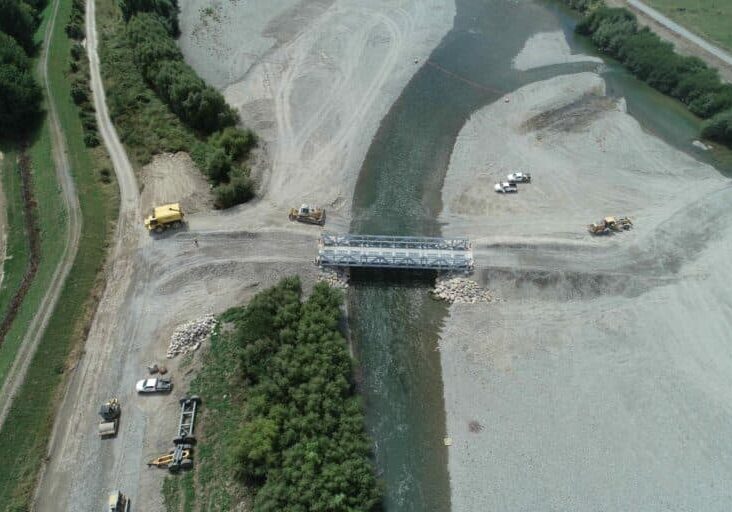Mills St Stopbank (October 2024 update)

Client: Greater Wellington Regional Council
Key collaborators: Fletcher Construction, Aecom, Winstones, Heron Construction
This flood resilience project aims to upgrade the stopbank from a current 1:74 to a 1:400 flood event level. The scope includes site vegetation clearance, haul road construction, installation and removal of erosion and sediment control measures, extraction of 55,000m3 of river gravels, excavation of a new alignment and pools in the Hutt River, and screening of the river gravel to generate the filter layer product.
The project required the winning, transport, and placement of low permeability fill material from a nearby Winstone quarry, as well as the supply, transport, and stockpiling of Rip Rap rock and construction of the new stopbank.
Key challenges: Working in a river environment, ecological and consent requirements, managing the logistics of barging rocks between the South Island and North Island and through ports, and quarrying activities.
Key achievements: No injury to staff to date, and no environmental compliance breaches.
Facts and figures:
- 22,000 tonnes of Rip Rap extracted, transported, barged, delivered to site, and stockpiled
- 55,000m3 of river gravel extraction
- 2000m3 of filter product screened
- 8000m3 of low permeability fill excavated, transported, and placed
- 18000m3 of pre-load river gravels excavated and placed in the new stopbank.
Taylors Contracting at work at Mills St (video credit: Greater Wellington)
Fish Salvage and Relocation Activities Summary
Gravel extraction and river realignment works within Te Awa Kairangi / Hutt River was undertaken in four main stages with fish salvage and relocation activities required by a team of ecologists (Stantec / Aecom) to take place prior to the commencement of construction works within each stage.
A combined approach was applied using electric fishing methods as well as overnight deployment of Fyke nets and Gee Minnow Traps to ensure that fish abundance within the original flowing river channel was reduced prior to construction impacts within each affected reach.
In one of the four impacted reaches of original habitat, a total of 1073 fish and 11 fish species were relocated, including the ‘Threatened’ lamprey and five ‘At Risk’ species including longfin eel, giant kōkopu, inanga, giant bully, and bluegill bully.
More than 4000 fish and 14 species were successfully caught and relocated to suitable areas outside the impacted work area during these works.
The abundance and diversity of fish discovered during these works is indicative of high quality fish habitat within this section of Te Awa Kairangi.








